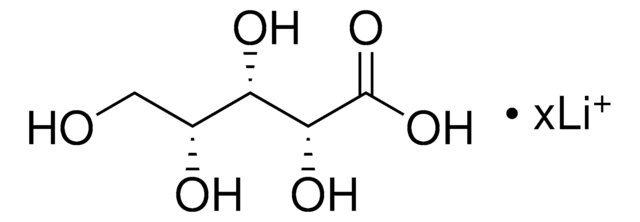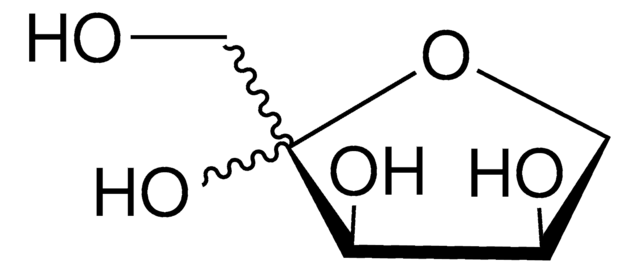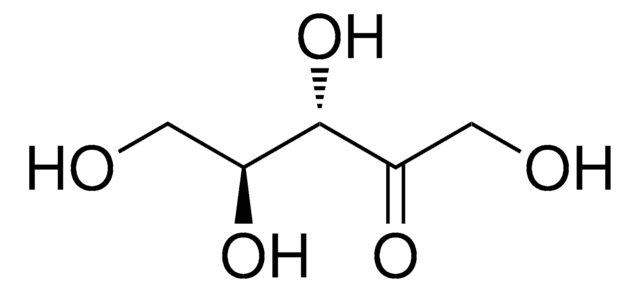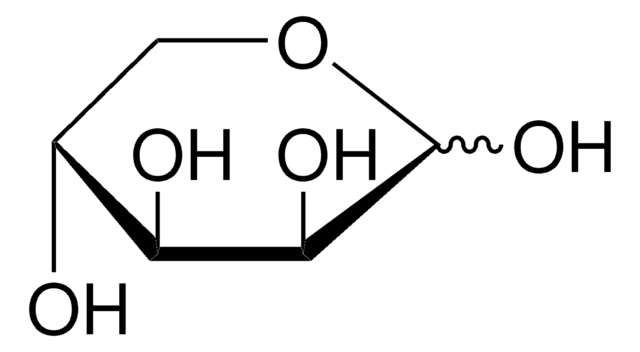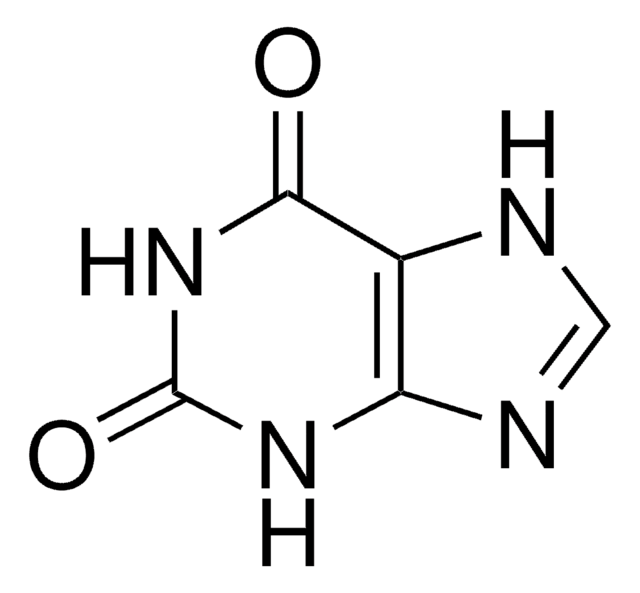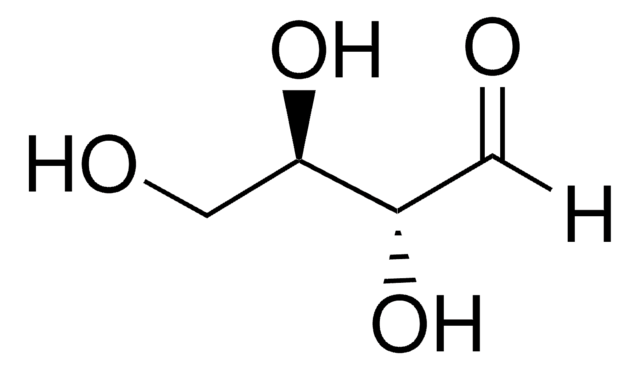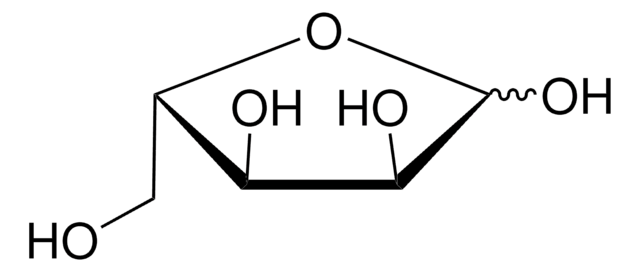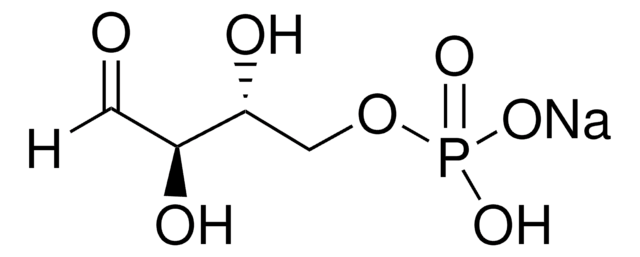X4625
D-Xylulose
≥95% (HPLC), syrup
Sinónimos:
D-threo-Pentulose
Iniciar sesiónpara Ver la Fijación de precios por contrato y de la organización
About This Item
Fórmula empírica (notación de Hill):
C5H10O5
Número de CAS:
Peso molecular:
150.13
Beilstein:
1723052
Número MDL:
Código UNSPSC:
12352201
ID de la sustancia en PubChem:
NACRES:
NA.25
Productos recomendados
Nivel de calidad
Ensayo
≥95% (HPLC)
Formulario
syrup
técnicas
HPLC: suitable
color
faintly yellow
solubilidad
water: 50 mg/mL, clear, faintly yellow to yellow
temp. de almacenamiento
−20°C
cadena SMILES
OCC1(O)OC[C@H](O)[C@H]1O
InChI
1S/C5H10O5/c6-2-5(9)4(8)3(7)1-10-5/h3-4,6-9H,1-2H2/t3-,4+,5?/m0/s1
Clave InChI
LQXVFWRQNMEDEE-PYHARJCCSA-N
¿Está buscando productos similares? Visita Guía de comparación de productos
Categorías relacionadas
Acciones bioquímicas o fisiológicas
D-xylulose is a monosaccharide, converted from xylitol in the glucuronate pathway.
Otras notas
To gain a comprehensive understanding of our extensive range of Monosaccharides for your research, we encourage you to visit our Carbohydrates Category page.
Código de clase de almacenamiento
10 - Combustible liquids
Clase de riesgo para el agua (WGK)
WGK 3
Punto de inflamabilidad (°F)
Not applicable
Punto de inflamabilidad (°C)
Not applicable
Equipo de protección personal
Eyeshields, Gloves
Elija entre una de las versiones más recientes:
¿Ya tiene este producto?
Encuentre la documentación para los productos que ha comprado recientemente en la Biblioteca de documentos.
Los clientes también vieron
Tien Anh Ngo et al.
Journal of the American Chemical Society, 138(9), 3012-3021 (2016-02-18)
We report the construction of an artificial enzyme cascade based on the xylose metabolic pathway. Two enzymes, xylose reductase and xylitol dehydrogenase, were assembled at specific locations on DNA origami by using DNA-binding protein adaptors with systematic variations in the
Misun Lee et al.
Biochemistry, 56(45), 5991-6005 (2017-10-19)
Xylose isomerase from Piromyces sp. E2 (PirXI) can be used to equip Saccharomyces cerevisiae with the capacity to ferment xylose to ethanol. The biochemical properties and structure of the enzyme have not been described even though its metal content, catalytic
Jenny P Glusker et al.
Acta crystallographica. Section D, Biological crystallography, 66(Pt 11), 1257-1261 (2010-11-03)
A description is given of the results of neutron diffraction studies of the structures of four different metal-ion complexes of deuterated D-xylose isomerase. These represent four stages in the progression of the biochemical catalytic action of this enzyme. Analyses of
Ye-Wang Zhang et al.
Applied microbiology and biotechnology, 90(2), 499-507 (2011-01-20)
Rare sugars have many applications in food industry, as well as pharmaceutical and nutrition industries. Xylitol dehydrogenase (XDH) can be used to synthesize various rare sugars enzymatically. However, the immobilization of XDH has not been performed to improve the industrial
Nichole F Huntley et al.
PloS one, 13(10), e0205913-e0205913 (2018-10-26)
It is important to understand if, and to what extent, the pig can utilize xylose as an energy source if xylanase releases free xylose in the small intestine. The experimental objectives were to determine the effects of industry-relevant dietary xylose
Nuestro equipo de científicos tiene experiencia en todas las áreas de investigación: Ciencias de la vida, Ciencia de los materiales, Síntesis química, Cromatografía, Analítica y muchas otras.
Póngase en contacto con el Servicio técnico